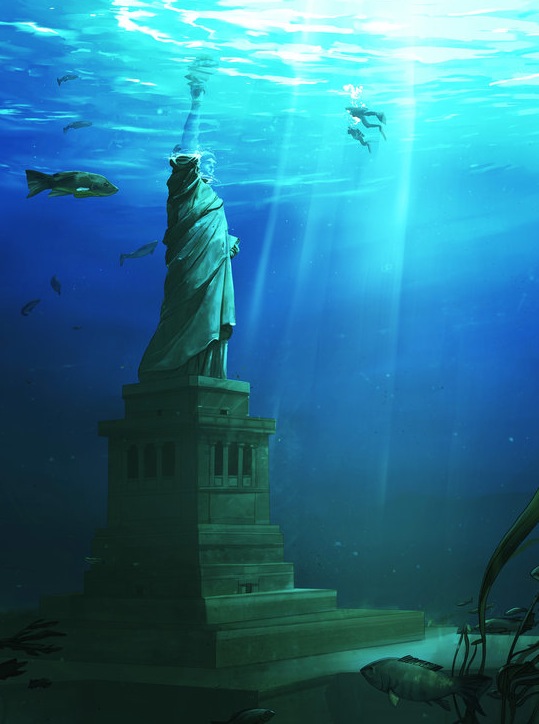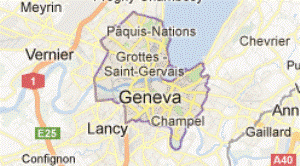ENVIRONMENT
NY Times Warns On Climate Change: ‘Fear Death By Water’, Rising Seas Likely To Swallow Up City If We Don’t Act Soon
November 26, 2012 · 0 Comments

By Joe Romm:
The NY Times (finally) goes apocalyptic on climate change. Here’s the cover image [above] of their big Sunday Review piece, “Is This The End?”
The sub-hed of the print story is “Whether in 50 or 100 or 200 years, there is a good chance New York City will sink beneath the sea.” The story begins:
WE’D seen it before: the Piazza San Marco in Venice submerged by the acqua alta; New Orleans underwater in the aftermath of Katrina; the wreckage-strewn beaches of Indonesia left behind by the tsunami of 2004. We just hadn’t seen it here. (Last summer’s Hurricane Irene did a lot of damage on the East Coast, but New York City was spared the worst.)“Fear death by water,” T. S. Eliot intoned in “The Waste Land.” We do now.
There had been warnings. In 2009, the New York City Panel on Climate Change issued a prophetic report. “In the coming decades, our coastal city will most likely face more rapidly rising sea levels and warmer temperatures, as well as potentially more droughts and floods, which will all have impacts on New York City’s critical infrastructure,” said William Solecki, a geographer at Hunter College and a member of the panel. But what good are warnings? Intelligence agents received advance word that terrorists were hoping to hijack commercial jets. Who listened? (Not George W. Bush.) If we can’t imagine our own deaths, as Freud insisted, how can we be expected to imagine the death of a city?
Yes, there is a strain of fatalism in this piece. The media often treat global warming like a progressive illness whose ever-worsening symptoms have been ignored too long — which, of course, they share culpability for (see “Silence of the Lambs 2: Media Herd’s Coverage of Climate Change Drops Sharply — Again“).
A companion piece, “Rising Seas, Vanishing Coastlines,” does a better job of spelling out the choices:
There are two basic ways to protect ourselves from sea level rise: reduce it by cutting pollution, or prepare for it by defense and retreat. To do the job, we must do both. We have lost our chance for complete prevention; and preparation alone, without slowing emissions, would — sooner or later — turn our coastal cities into so many Atlantises.
Precisely. And the Times includes an excellent interactive graphic of the nation’s major cities with 5 feet, 12 feet and 25 feet of warming, “What Could Disappear.”
Still, the fatalism in the main piece is over the top:
When, on my way home at night, I climb the steps from the subway by the American Museum of Natural History — itself a monument to transience, with its dinosaurs and its mammoth and its skeleton of a dodo bird, that doomed species whose name has become an idiom for extinction — I feel more keenly than ever the miraculousness, the improbability of New York.
Looking down Central Park West, I’m thrilled by the necklace of green-and-red traffic lights extending toward Columbus Circle and the glittering tower of One57, that vertical paradise for billionaires. And as I walk past the splashing fountain in front of the museum’s south entrance on West 77th Street, I recall a sentence from Edward Gibbon’s ode to evanescence, “The Decline and Fall of the Roman Empire,” in which “the learned Poggius” gazes down at the remains of the city from the Capitoline hill: “The public and private edifices, that were founded for eternity, lie prostrate, naked, and broken, like the limbs of a mighty giant; and the ruin is the more visible, from the stupendous relics that have survived the injuries of time and fortune.”
This is our fate. All the more reason to appreciate what we have while we have it.
All that is missing from this article is Charlton Heston slamming his fist on the ground and swearing:
Planet of the homo ‘sapiens’ sapiens?
By admin










Sorry, comments are closed on this post.